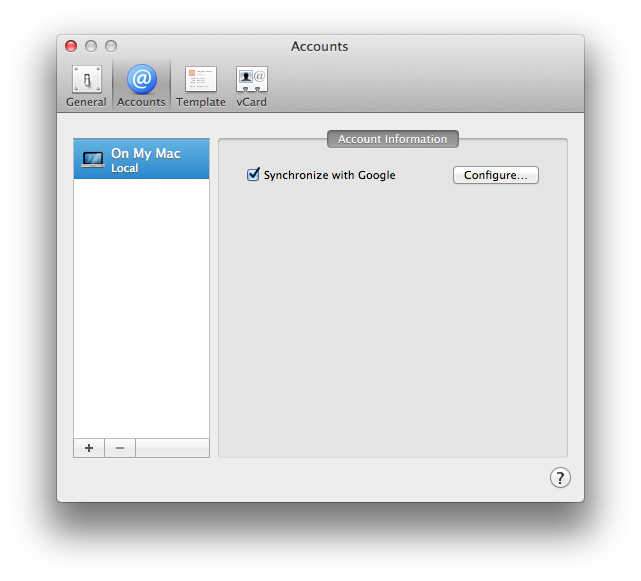Google Contact photos are a much neglected feature of the Google Stack. It really adds to the user experience when you see each of your contact photos when you make or receive a call. However, it can be a real pain (especially if you have hundreds of contacts).
But I had an idea recently, to try and match my Google Contact emails with Gravatar and try to auto-populate some of the dozens of contacts that didn’t already have a photo (after all a Gravatar is better than nothing).
So I wrote a Ruby script to find my contacts missing a photo and try to update it with a Gravatar (wherever possible). NB: You may need to first install the GData (Google Data) gem by opening a Terminal window and issuing: sudo gem install gdata.
#!/usr/bin/env ruby
# Google Contact Photos - Gravatar Importer
# Written by Ashley Angell
# http://ashleyangell.com
# Licenced under Creative Commons with Attribution
require "rubygems"
require "gdata"
require "rexml/document"
require "digest/md5"
require "net/http"
include REXML
none = 'd5fe5cbcc31cff5f8ac010db72eb000c'
user = ARGV[0]
pass = ARGV[1]
client = GData::Client::Contacts.new
client.clientlogin(user, pass)
data = client.get("https://www.google.com/m8/feeds/contacts/#{user}/full?max-results=10000")
myxml = Document.new data.body
p "contacts"
puts "-"*70
i = 0
myxml.each_element("feed/entry") do |e|
begin
gd = e.elements['gd:email']
if !gd.nil?
email = gd.attributes['address'].downcase
hash = Digest::MD5.hexdigest(email)
image_src = "http://www.gravatar.com/avatar/#{hash}"
nil_image = false
image_element = e.get_elements("link[@rel='http://schemas.google.com/contacts/2008/rel#photo']")[0]
if !image_element.nil? and image_element.attributes['gd:etag'].nil?
data = nil
md5 = nil
Net::HTTP.start(URI.parse(image_src).host) do |http|
resp = http.get(URI.parse(image_src).path)
data = resp.body
md5 = Digest::MD5.hexdigest(data)
File.open("#{email}.png", 'w') do |f|
f.puts data if md5 != none
end
end
md5 = Digest::MD5.hexdigest(data)
if md5 != none
puts "#{email} > #{image_src}"
client.put_file(image_element.attributes['href'], "#{email}.png", 'image/png')
i = i + 1
else
puts "#{email} > no match"
end
else
puts "#{email} > skipped (already has photo)"
end
File.delete("#{email}.png") if File.exists?("#{email}.png")
end
rescue Exception => ex
puts ex
end
end
puts "Updated #{i} contact photos"
To execute it, simply copy and paste this into a text editor (or download it and unzip) and from Terminal (command) window and execute the following commands:
sudo chmod +x googlegravatarimporter.rb [Enter]
./googlegravatarer.rb your.address@gmail.com your_password [Enter]
It will cycle through your Google Contacts and indicate what action was taken. For me, surprisingly updated a few dozen contacts (even more than I expected).
I’ve posted this here for others that might want to do the same thing but cannot be bothered writing the script for it. Consider it posted here under Creative Commons with Attribution.



